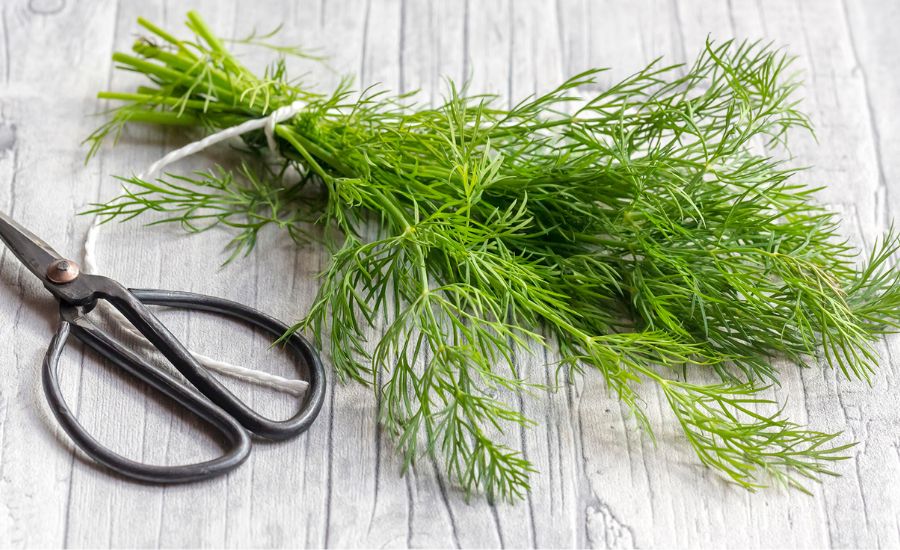Dill is one of the most popular herbs in the world. When you properly grow it, dill makes a great harvest. However, are there any special tips on how to grow and harvest dill?
In this article, we will share the main tips on how to harvest and maintain your own dill in the best ways.
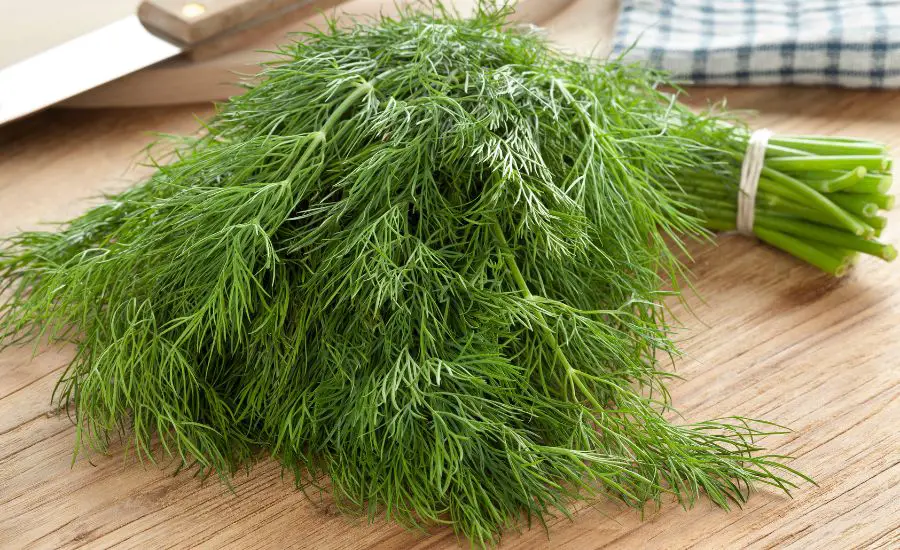
Contents
10 smart tips on growing dill
The good news is that growing dill is not a science. In comparison to some other herbs, dill is quite easy to grow and maintain. However, there are always several crucial tips that you should know about dill maintenance.

Tip 1. Dill belongs to the Mediterranean and Eurasian herbs that prefer a temperate and warm climate. Consider this point when planting dill, as it will grow more eagerly in warmer temperatures.
What is more, dill is not tolerant of frosts.
Although this herb can tolerate some temperature changes, it can’t survive in cold conditions.
Tip 2. Dill grows best in full sun. Provide your dill plants with enough sun when planting. Don’t sow dill seeds in the shaded areas as they won’t thrive. Besides, lack of light makes your dill weed grow taller. The dill stems get weaker without enough light instead of being strong.
Tip 3. Dill is an annual herb, so you must harvest all the dill for the season. When you harvest dill, always leave a permanent patch to fully grow, flower, and produce seed heads. So, when you plant dill, think of planting in larger quantities.
In addition, dill is a self-seeding herb, so you can just leave several flower heads to dry and sow naturally in your garden.
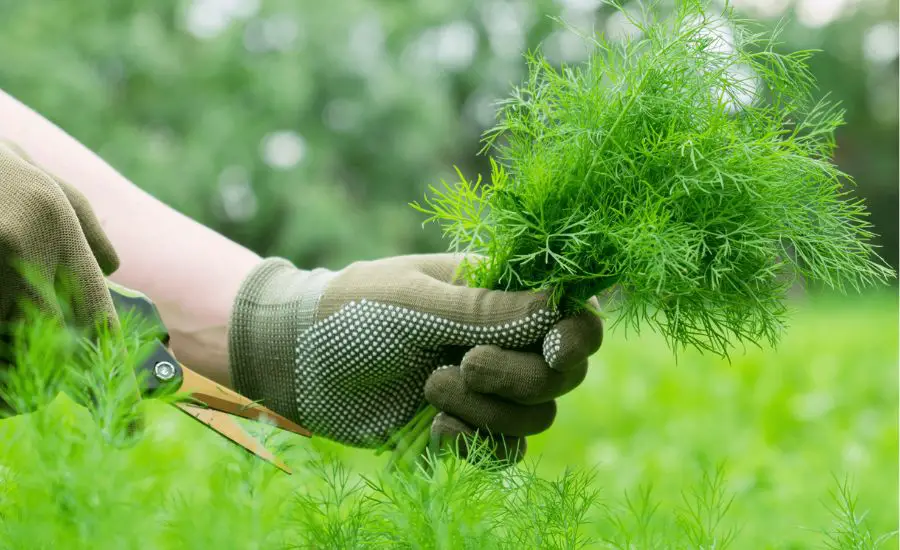
Tip 4. An optimal time to sow dill seeds is the spring when there are no risks of frosts. Wait until the soil temperature reaches about 60° or 70ºF (15° and 21°C). The germination stage usually starts 10 to 14 days after seeding.
Tip 5. The best soil for growing dill is well-drained garden soil, which is full of organic matter.
Tip 6. Dill grows best with moderate but regular watering. Avoid shifting wet and dry periods for this herb. However, be careful not to over-dry your dill.
Overwatering is not recommended as well, since it makes the leaves grow floppy and creates a breeding ground for many fungal diseases.
Tip 7. Pruning dill is crucial as it helps the plants to grow further and renovate the foliage. However, don’t snip too much to let the plant regenerate new sprigs.
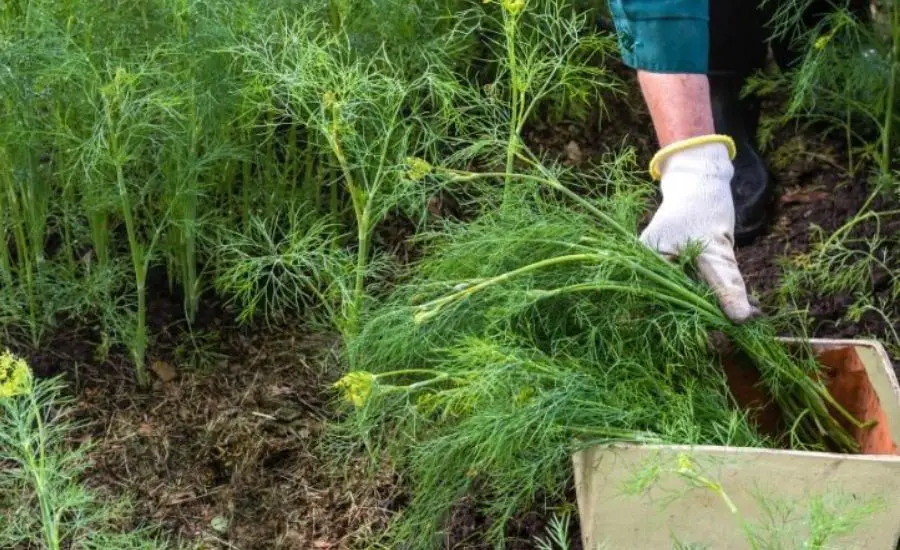
Tip 8. In case you need a constant supply of freshly harvested dill, plant dill regularly in a few weeks. Sow new seeds to have more fresh dill throughout the whole season.
Tip 9. Delay flowering to get the best taste qualities. As flowers and seeds won’t take out the oil and spicy aroma from the rest of the plant, you will get all best from your dill weed.
Tip 10. Beware of pests! Don’t forget to protect your herbs against the predatory insects and caterpillars that tend to live on dill.
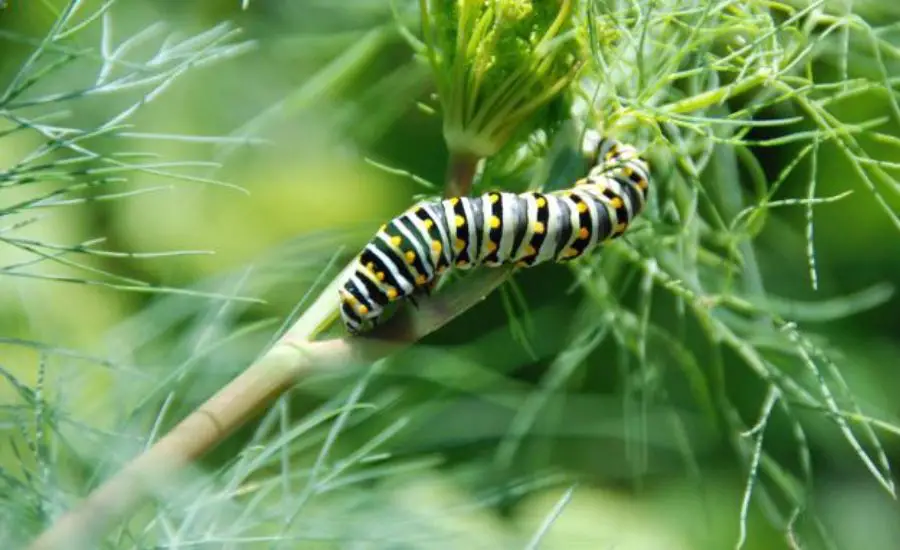
How do you harvest dill without killing the plant?
Now, when your dill plants are ready for harvesting, the key question is how to do it without killing the whole plant. As a quickly regrowing herb, dill can be harvested multiple times throughout the season.
So, here are the smart hacks on harvest dill without killing the plant.
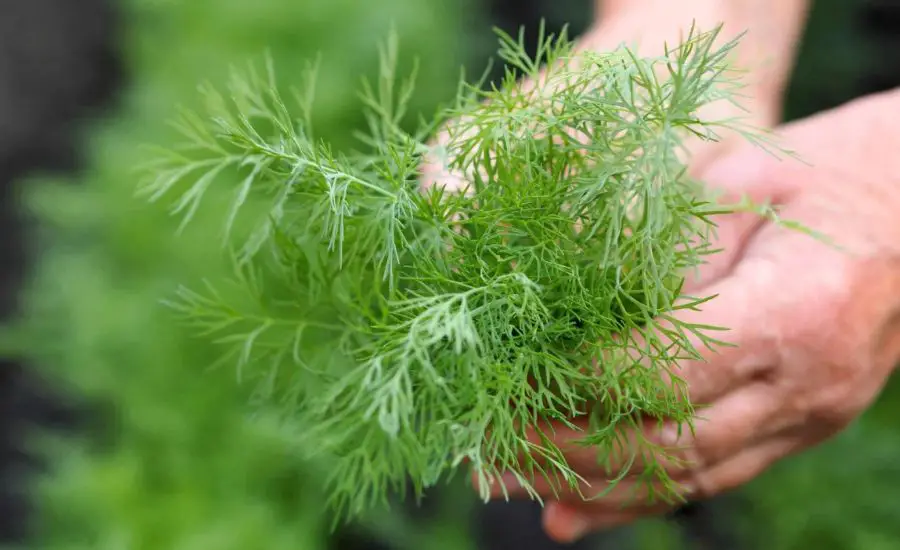
#1. Make sure that your dill plant is ready to harvest
Before harvesting dill, inspect the plants and make sure they are developed enough for that.
As a rule, the first dill harvest is ready as soon as the dill plant develops at least 4 or 5 true leaves. These leaves, also known as dill weed, look like feathery sprigs growing out of the main stem.
Generally, it is about 6-8 weeks after the dill seeds sowing when the dill plant grows these five crucial leaves. So, this is the ideal time for harvesting dill.
One more tip is to harvest dill before your plants start flowering. If you want to prolong the harvesting season and harvest dill several times, don’t let your plant flower and produce seeds. In addition, this tip helps you to save most oil in the dill weed and get the best flavor of them.
#2. Choose the right day for harvesting dill
Opt for a warm and dry day to harvest dill. Just like many other herbs, dill is best to harvest early in the morning. At this time, the morning dew evaporates from the dill surface, but the plant is still cool and the weather is not too hot.
#3. Feel free to cut
Start harvesting from the older leaves. Cut them off to make enough space for new stems and foliage to grow. Then, you can snip the fresher leaves off as well.
The main rule of thumb is to never harvest more than a third of the dill plant. There must be enough of the plant to recover and produce new growth.
You can also simply pinch the dill weed off by hand, especially if you need just a couple of fresh dill sprigs for cooking.
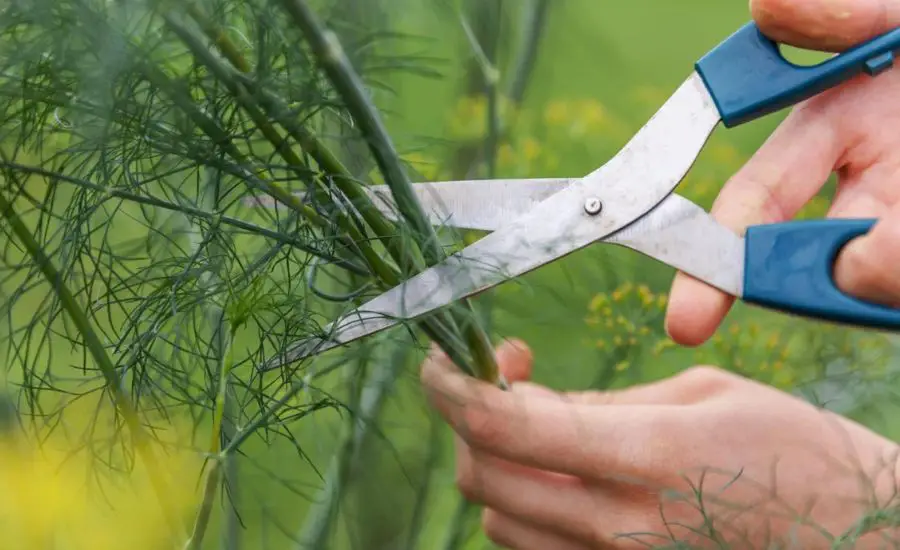
#4. Use right tools
Harvest your dill weed with a help of clean and sharp scissors, or pruners as well. Don’t forget that a clean cut is crucial for the plant’s health.
Rough cuts are dangerous for herbs as they make a high risk of getting infections and fungal diseases. So, be sure that your tools are sharp and clean enough, without rough and rusty spots on the blades.
#5. Harvest dill before flowering
The best idea is to pick dill leaves before the plant starts flowering. At this time, the dill foliage is mostly full of oil, so they have the best aroma and flavor. Be attentive through the growing season so as not to miss this moment.
#6. Don’t harvest again until your dill recovers
Avoid harvesting too often, as your herbs don’t have enough time to recover after the previous picking. Unless it is the last harvesting in the growing season, never pick all the foliage of the dill.
If you grow lots of dills, you can take several full stems without any drastic impact on the whole patch of dill.
#7. Harvest all your dill before frosts
Don’t forget to harvest all your dill before the first frost. Keep in mind that dill doesn’t tolerate frost, so your plant will die. The best idea is to fully harvest in the fall while it is still not frosty. Double-check with the weather forecast!
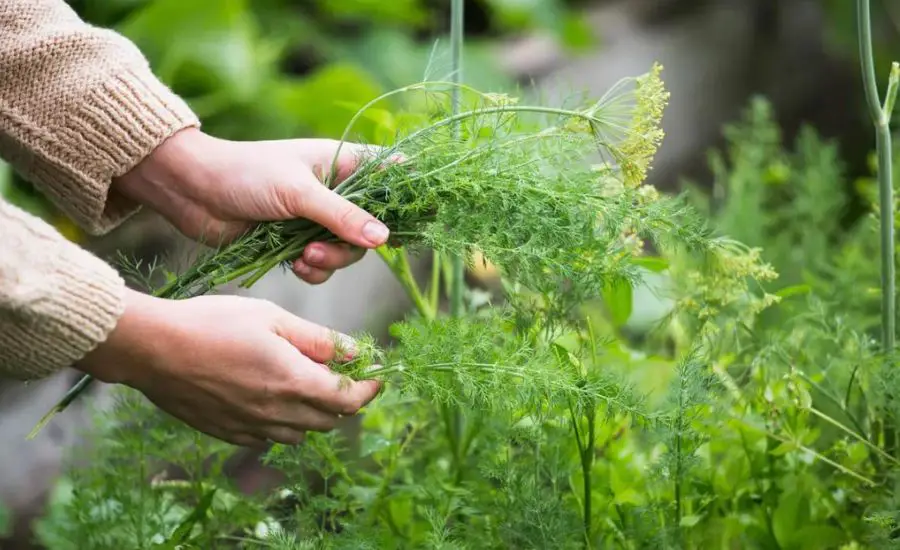
How do you harvest dill seeds?
At the end of the harvesting season, you need to harvest dill seeds to sow them next spring. What is more, you can also cook them to bring extra flavor to some dishes.
Dill seeds are teardrop-shaped, about 0,15-0,19 inches long. When ripe, they turn brown and dry out.
This brown coloring is a sure sign that you can harvest a dill seed head.
To get a seed head’s harvest, let the dill flower. Then, wait until the flower heads fade and get striped brown seeds.
Prepare several paper bags for the dill seed storage and a pair of scissors for snipping.
Bend the dill stems over the paper bag. Then, cut the flower heads out at the bent point. Collect as many flower heads as you need.
When you collect the dill seeds, place the paper bags in a dry place. Let the heads fully dry to be ready and keep them at the dry location for the next season of sowing.
You can also leave a flower head along with the dill seeds for the next growing season. Remember that dill seeds can sow, germinate and grow naturally.

How do you harvest and store dill?
After harvesting, don’t forget to wash all the picked herbs. No matter if you are going to use fresh sprigs or dry dill for long-term storage, you need it clean.
Then, you have a few variants of how to store dill.
Freshly harvested leaves are good to store in the refrigerator’s crisper drawer. Wrap the clean leaves in a wet towel and place them in an airtight container or a sealed plastic bag. Then, place this container in the crisper drawer of your fridge. You can use these herbs for a few days, or as long as they are still fresh.
One more variant is to harvest full stems and keep them in a glass of water, just like a bunch of flowers. Thus, you can keep them fresh for up to a week. For better effect, place a plastic bag over the glass with harvested stems. Don’t forget to change the water every day!
Freezing is a smart way to keep your dill fresh for a longer time. The most popular option to freeze dill is to keep them in ice cubes. Chop the fresh leaves and place them into the ice cube trays.
The whole stems and sprigs are good to freeze in an airtight container or a plastic bag.
You can also dry dill leaves as well as seed heads after harvesting.
Whole sprigs are good to dry in bunches. Fix them upside down on a rope and let them dry completely for a few days.
You can also dry dill as small leaflets for further usage. Clip the small leaves and let them dry on a baker’s rack. Place the rack in a dry and warm place for a few days. Don’t forget to turn the leaves daily!
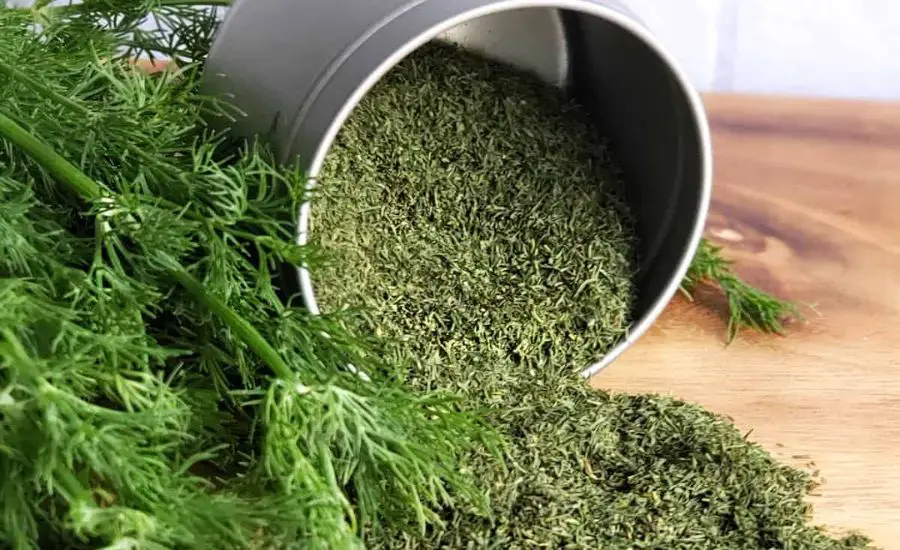
FAQ
Why grow dill?
Tasty and aromatic dill leaves are also known as dill weed. Although they don’t have a bright flavor, their main feature is a rich aroma that makes a great accent to your food.
Both dry and fresh dill are popular components of many Eurasian dishes:
• Dill pickles;
• Salads;
• Soups;
• Hamburgers;
• Meat dishes;
• Fish recipes;
• Rice dishes;
• Seafood dishes.
Besides cooking, dill can be used for different purposes.
Dill is known in medicine as a natural tranquilizer and a good treatment for digestive issues.
You can chew several dill seeds to refresh your breath. Roasted seeds are also used in some dishes for extra flavor.
Does dill grow back after you pick it?
Yes, this herb can easily grow back after harvesting. You can pick dill weed multiple times during the whole season.
However, be sure not to pick too much. A third of the plant is your maximum, or else the plant will never grow back.
What part of a dill plant do you pick?
As you already know, the main rule of thumb is to snip no more than a third of the plant. Picking more is dangerous for dill as it can’t regrow afterward.
Final thoughts
As you can see, dill harvesting, maintenance, and storage are not difficult. You can easily enjoy your favorite herbs all year long!

